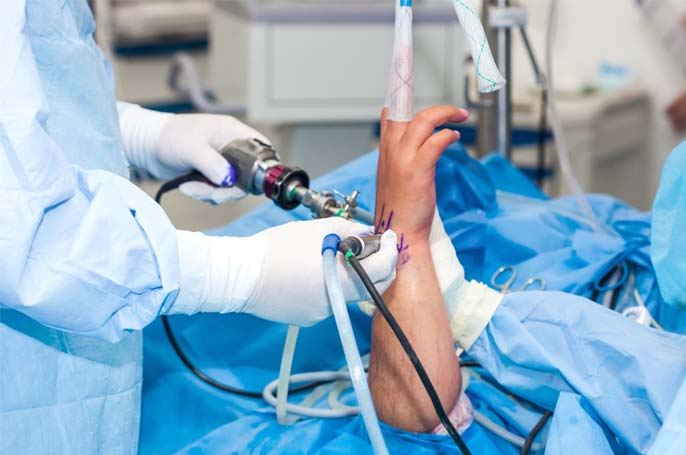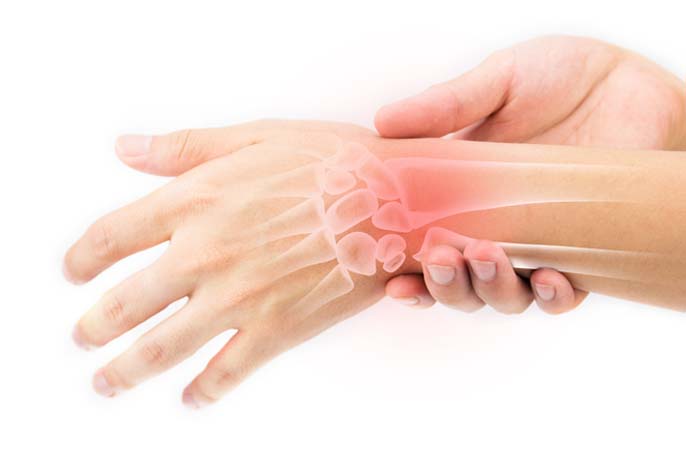Hand and Wrist Surgery

Hand & Wrist conditions we treat include:
We have a multi-faceted approach to treating hand and wrist pain, conditions, and injuries that include surgical, non-surgical and physical therapy to relieve pain associated with various conditions and improve function after an injury.
This specialty is in the safe hands of our renowned hand surgeon Dr. Ankul Sachar. With his impeccable expertise and experience exclusively in the field of hand surgery, he is one of the pioneers in India who has transformed Hand surgery into a Super speciality.
How do the hands and wrists work?
The movement and power of your hand and wrist are controlled by muscles and tendons:
- The flexor group, on the inside or front of the arm, control bending of your fingers and wrist – these pass over the front of your wrist and are held in place by a strong fibrous band called the flexor retinaculum, or carpal tunnel ligament.
- The extensors on the outside or back of your forearm allow the hand to open up.
- Small muscles in your hand (the lumbricals and interossei) allow fine movement.
Finger, hand, or wrist injuries most commonly occur during:
- Sports or recreational activities.
- Work-related tasks.
- Work or projects around the home, especially if using machinery such as lawn mowers, snow blowers, or hand tools.
- Accidental falls.
- Fistfights.
Signs and Symptoms of hand and Wrist Surgery are :
- Severe pain while moving hand or wrist
- Osteoarthritis or Rheumatoid arthritis
- Swelling hand or wrist
- Tenderness hand or wrist
- Bruising hand and wrist
- Stiffness in fingers or thumb
- Numbness in hand or fingers
Procedure for hand and Wrist Surgery :
To identify the diagnosis doctor advised to go for complete evolution – usually blood investigation, X-ray, (CT) scan or magnetic resonance (MRI) imaging. Before surgery, the surgeon and anaesthesia will guide you about the benefits and risk factors of Hand and Wrist Surgery.
Step 1- Anesthesia : Hand and Wrist surgery takes 1 to 2 hours depending upon the procedures by giving local or general anesthesia to relieve pain.
Step 2 – The incision: The orthopedic surgeon will do the procedures as per patient condition; by minimally invasive surgery the surgeon makes a very small incision on the side of the joint that needs to be operated by the help of arthroscopy. The surgeon uses implant pins, plates, rods or screws to hold the bones in place to heal fast or a bone graft might be used. The orthopedic surgeon monitors the accurate position of the implant with the help of an x-ray or fluoroscopy.
Step 3 – Closing the incisions: The orthopedic surgeon flaps the skin after the surgery with the help of Sutures, skin adhesives, tapes or clips that close the skin incisions.


